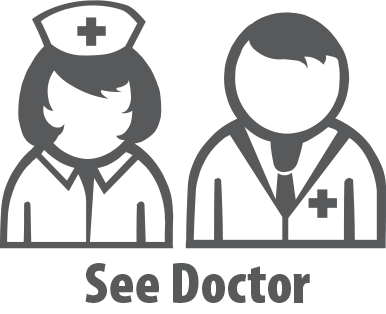Respiratory conditions
SARS – Severe Acute
Respiratory Syndrome
SARS is a viral respiratory illness. It began in Asia in February 2003 and spread to other countries.
Signs & Symptoms
• Fever higher than 100.4ºF.
• Headache. The body aches all over. Diarrhea may occur.
• Dry cough after 2 to 7 days.
• A hard time breathing and/or shortness of breath. Most persons develop pneumonia.
Causes
SARS is thought to be caused by a certain virus. It is spread by close contact with someone who has the virus. Most likely, this is through coughs and sneezes or from touching objects that have infectious droplets on them.
Treatment
Medical treatment is needed for SARS. Persons suspected of having SARS should be quarantined in a hospital.
Questions to Ask
Question
01
Do you have a fever, higher than 100.4ºF, a dry cough, a hard time breathing, and/or shortness of breath and have you been in close contact with someone who has SARS, might have SARS, or who travelled to a SARS site within the last 10 days?

You should be seen by your doctor for medical advice. Contact your doctor or health care provider to find out how soon you should be seen.
x
Self-Care / Prevention
• Before you travel, check the CDCs Travelers’ Health Web site at www.cdc.gov/travel for updates on SARS.
• If you will be in close contact with a person infected with SARS, follow infection control measures. Wash your hands often or use alcohol-based hand rubs. If you can, wear a surgical mask. Don’t share eating utensils, towels, etc. For a more complete list of guidelines, access www.cdc.gov/ncidod/sars/ic-closecontacts.htm.
Resources
Centers for Disease Control and Prevention (CDC)
800.CDC.INFO (232.4636)
World Health Organization (WHO)

Download an offline pdf file.
2021 © American Institute for Preventive Medicine - All Rights Reserved. Disclaimer | www.HealthyLife.com








